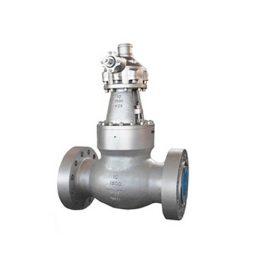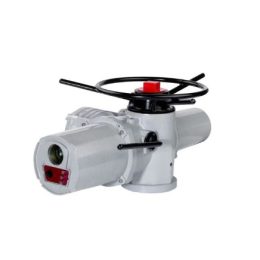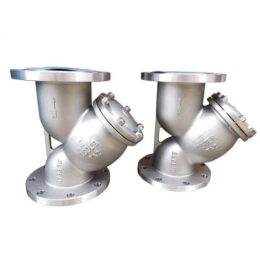
Pneumatic Actuated Butterfly Valve
Introductions
The Pneumatic Actuated Butterfly Valve is a type of throttle valve and an important device in water supply and drainage piping systems. Its closing part is a disc that rotates around the valve shaft to open and close, and it is mainly used for cutting off and throttling in the pipeline. The use of a worm gear reducer enables not only the butterfly plate to be self-locking, thus stopping the plate in any position, but also improves the valve’s operational performance.
The Pneumatic Actuated Butterfly Valve is characterized by high temperature resistance, a high applicable pressure range, a large nominal diameter of the valve, and a valve body made of carbon steel. The sealing ring of the valve plate uses a metal ring instead of a rubber one. It is manufactured by welding steel plates and is mainly used for pipelines with high-temperature media. In addition, it has a simple structure, is small in size, light in weight, and is low cost.
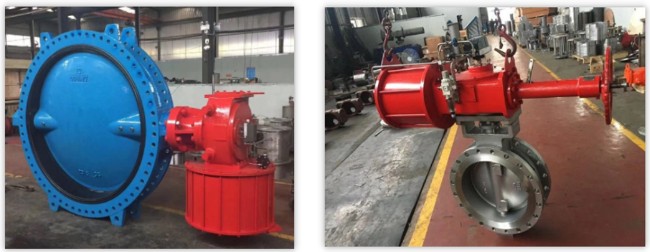
Technical Specifications:
| Description | Specification |
|---|---|
| Sizes | NPS 1/2 to NPS 48 |
| Pressure Class | Class 150 to 2500 |
| Casting Materials | Cast Iron, Ductile Iron, WCB, WC6, WC9, A350 LCB, A351 CF8, CF8M, CF3, CF3M, A995 4A, A995 5A, A995 6A |
| Other Materials | Alloy 20, Monel, Inconel, Hastelloy |
| End Connections | Wafer, Lugged, RF |
| Bonnet Type | Single Acting Pneumatic Actuator or Double Acting Pneumatic Actuator |
Design Standard
Design & manufacture according to API 609
Face-to-face according to ASME B16.10
End Connection according to ASME B16.5 or B16.47 (Wafer, Lugged, Flange)
Test & inspection according to API 598
Also available per NACE MR-0175, NACE MR-0103
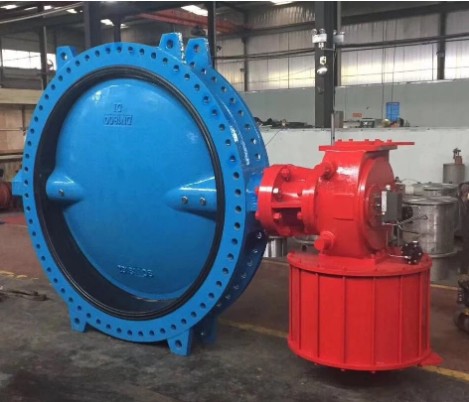
Advantages
One of the main advantages of the Pneumatic Actuated Butterfly Valve is its versatility. It can be used in a variety of applications, including food and beverage, pharmaceutical, chemical, and petrochemical industries. Additionally, it can handle a wide range of fluids, including liquids, gases, and slurries.
Another advantage is its cost-effectiveness. Compared to other types of valves, the Pneumatic Actuated Butterfly Valve is generally less expensive and easier to install. It also requires minimal maintenance, which can save you time and money in the long run.
Applications
The Pneumatic Actuated Butterfly Valve is commonly used in fluid control systems for a variety of applications. Some of the most common applications include:
- HVAC systems
- Water treatment plants
- Food and beverage processing
- Chemical processing
- Petrochemical processing
- Pharmaceutical processing
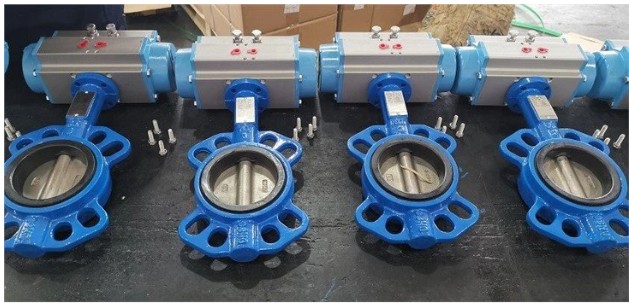
Benefits
In addition to its versatility and cost-effectiveness, the Pneumatic Actuated Butterfly Valve offers a number of benefits, including:
- Quick and easy operation
- Tight shutoff capability
- High flow capacity
- Corrosion-resistant materials
- Low pressure drop
Installations
Installing a pneumatic actuated butterfly valve is a relatively easy process that requires a few basic steps. Firstly, note that the valve can be mounted in any orientation, which provides flexibility in the installation process. Secondly, position the actuator in any direction to further simplify the installation process. However, exercise caution when handling the valve and ensure that it is properly aligned and supported to prevent any damage to the valve or the piping system. You can use specialized tools to ensure proper alignment during installation. Additionally, perform routine maintenance on the valve to ensure optimal performance. This includes checking for leaks or damage and lubricating the valve components. By following these steps, you can ensure that your pneumatic actuated butterfly valve operates smoothly and efficiently over the long term.

Q&A
Q: What is a Pneumatic Actuated Butterfly Valve?
A: A Pneumatic Actuated Butterfly Valve is a type of valve that uses air pressure to open and close a disc, which controls the flow of fluid through the valve.
Q: What are some common industries that use Pneumatic Actuated Butterfly Valves?
A: Some common industries that use Pneumatic Actuated Butterfly Valves include the food and beverage, pharmaceutical, chemical, and petrochemical industries.
Q: What are some benefits of using a Pneumatic Actuated Butterfly Valve?
A: Some benefits of using a Pneumatic Actuated Butterfly Valve include quick and easy operation, tight shutoff capability, high flow capacity, corrosion-resistant materials, and low pressure drop.
Q: How do you install a Pneumatic Actuated Butterfly Valve?
A: Installing a Pneumatic Actuated Butterfly Valve is relatively simple. The valve can be mounted in any orientation, and the actuator can be positioned in any direction. It is important to ensure that the valve is properly aligned and supported to prevent damage to the valve or the piping system.
